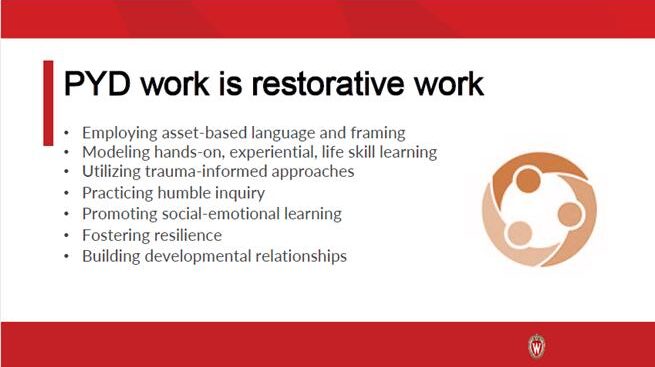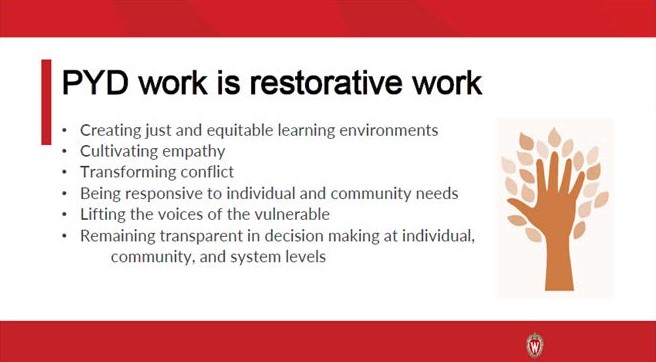Positive Youth Development Is Restorative Justice work.
The 4-H Thriving Model was developed outside of Wisconsin by Mary Arnold, Youth Development and Evaluation Specialist, at Oregon State University. The flower diagram that represents youth Thriving in Wisconsin, grows in many spaces AND this is one of them. You(th) can find it on websites that promote 4-H such as the Wisconsin 4-H Movement. You(th) can find it under volunteer resources Read more about restorative work in the images. Which concepts are familiar? Which do you already practice with youth?
Read more about restorative work in the images. Which concepts are familiar? Which do you already practice with youth?
Facilitating Youth Sparks—Providing a place for youth to explore their interests and passions—their sparks! Consider:
- Sparks may include aspects of leadership such as allyship.
- Sparks become community connections. This may be volunteer service or a career path. Many layers of society and history come along with these choices.
- Seeing someone like you enjoy and succeed at your spark matters!
Youth Program Quality Principles—Offering programs with a focus on youth belonging. Consider:
- Belonging includes EVERY aspect of who you(th) are. What is easily seen AND especially what isn’t seen. Learn more with this example activity, “Culture is Like an Iceberg”.
Fostering Developmental Relationships—Emphasizing developmental relationships with adults who are caring, challenge growth, and share power. Consider:
- You may be used to having conversations about Thriving in similar situations. Stretch yourself. Challenge your current attitudes, habits and beliefs, find Thriving in a ‘new to you’ conversation.
References
1 Restorative practices across the continuum for positive youth development professionals NAE4-HYDP 2022. Annie Lisowski Professor UW-Madison Division of Extension.
This page is optimized for printing






